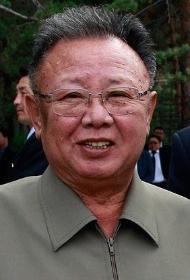Kto umawiał się z Sŏng Hye Rim?
Kim Jong-il umawiał się z Sŏng Hye Rim od do . roku Różnica wieku wynosiła 4 lata, 0 miesięcy i 23 dni.
Sŏng Hye Rim
Sŏng Hye Rim, również Song Hye Rim (kor. 성혜림; ur. 24 stycznia 1937 w Ch'angnyŏng, zm. 18 maja 2002 w Moskwie) – północnokoreańska aktorka, pierwsza kochanka Kim Dzong Ila.
Sŏng Hye Rim grała w wielu licznych przedstawieniach, podczas których zwróciła uwagę Kim Dzong Ila. Była bardzo kobieca, a przy tym elegancka. W latach 60. XX wieku była bardzo popularną aktorką, pojawiając się w filmach takich jak: Onjŏngryŏng (kor. 온정령) i Baek Il-hong (kor. 백일홍). Rozwiodła się ze swoim mężem po to, by móc być pierwszą damą KRLD, którą nigdy nie została. Urodziła przywódcy Korei Północnej najstarszego syna Kim Dzong Nama w 1971. Jego narodziny były trzymane w tajemnicy przed Kim Ir Senem do 1975. Podobno kiedy Sŏng Hye Rim rodziła w szpitalu syna, pojawiła się tam żona Kim Dzong Ila, Kim Yŏng Suk. Personel musiał wynieść rodzącą przez okno i ukryć w lesie.
W latach 80. Sŏng Hye Rim rozpoczęła leczenie w Moskwie. Wielu znajomych i przyjaciół Sŏng Hye Rim zostało uwięzionych w obozach, ponieważ mógłby się wydać jej związek z Kim Dzong Ilem. Jednak jak podają eksperci, głównym powodem opuszczenia Korei Północnej przez panią Sŏng były coraz częstsze napady gniewu Kim Dzong Ila. Zmarła w Moskwie 18 maja 2002.
Czytaj więcej...Kim Jong-il

Kim Jong Il (born Yuri Kim; 16 February 1941 or 1942 – 17 December 2011) was a North Korean politician and dictator who was the second supreme leader of North Korea from the death of his father Kim Il Sung in 1994 until his death in 2011. Posthumously, Kim Jong Il was declared Eternal General Secretary of the Workers' Party of Korea (WPK).
In the early 1980s, Kim had become the heir apparent for the leadership of North Korea, thus being established the Kim family, and he assumed important posts in party and army organizations. Kim succeeded his father and founder of North Korea, Kim Il Sung, following his death in 1994. Kim was the General Secretary of the WPK, WPK Presidium, WPK Central Military Commission, Chairman of the National Defence Commission (NDC) of North Korea and the Supreme Commander of the Korean People's Army (KPA), the fourth-largest standing army in the world.
Kim ruled North Korea as a repressive and totalitarian dictatorship. Kim assumed leadership during a period of catastrophic economic crisis amidst the dissolution of the Soviet Union, on which it was heavily dependent for trade in food and other supplies, which brought a famine. While the famine had ended by the late 1990s, food scarcity continued to be a problem throughout his tenure. Kim strengthened the role of the military by his Songun ("military-first") policies, making the army the central organizer of civil society. Kim's rule also saw tentative economic reforms, including the opening of the Kaesong Industrial Park in 2003. Under his leadership, North Korea conducted its first nuclear test in October 2006, obtaining nuclear weapons. In April 2009, North Korea's constitution was amended to refer to him and his successors as the "supreme leader of the DPRK".
The most common colloquial title given to Kim during his lifetime was "Dear Leader" to distinguish him from his father Kim Il Sung, the "Great Leader". Following Kim's failure to appear at important public events in 2008, foreign observers assumed that Kim had either fallen seriously ill or died. On 19 December 2011, the North Korean government announced that he had died two days earlier, whereupon his third son, Kim Jong Un, was promoted to a senior position in the ruling WPK and succeeded him. After his death, alongside "Eternal General Secretary" of the WPK, Kim Jong Il was declared "Eternal Chairman" of the now defunct National Defence Commission, in keeping with the tradition of establishing eternal posts for the dead members of the Kim dynasty. North Korean media also began referring to Kim as "the General" (장군 Changgun), similar to his father's posthumous designation as "the [eternal] President".
Czytaj więcej...